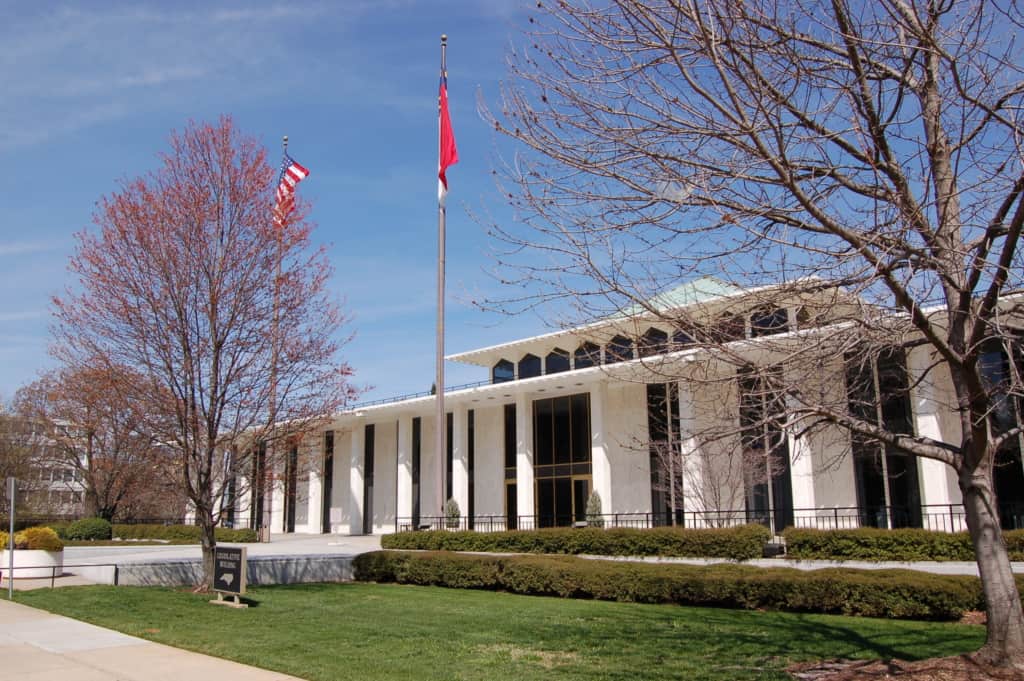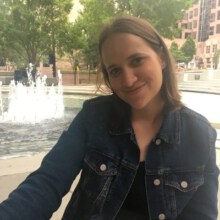
2020 is right around the corner, and it will undoubtedly be a critical year for North Carolina politics for a couple of key reasons. Not only is 2020 a presidential election year, but it is also the year of the federal census. Every 10 years, the U.S. Census Bureau releases new population figures for all 50 states, which determine the allocation of representation in Congress and resources for each state over the next decade. Following the release of the census, each state legislature is tasked with redrawing the congressional and state legislative districts based on the population changes indicated by the census. With the 2020 census comes the district redrawing, and the resulting maps will significantly impact policy in North Carolina.
Historically, each state legislature is responsible for redistricting both the congressional and state legislative districts. Over time, many states have opted to transfer that power to independent boards or commissions. Some of these commissions are solely responsible for drawing the district maps, while others are merely used in an advisory capacity or as a back-up commission to the state legislature. North Carolina, however, still uses the state legislature to draw the now 13 congressional districts, as well as the 50 state Senate districts and the 120 state House districts.
A history of partisan gerrymandering
For decades, the North Carolina legislature has drawn criticism for producing gerrymandered maps. In the 2010 election, Democrats were able to manipulate the map in such a way that gave them 7 of the 13 available congressional House seats while only obtaining 45 percent of the votes.
Decades earlier, Democrats came under fire from both Republicans and black voters for supporting multi-member districts in the larger urban areas instead of single-member districts. The Democratic majority opposed the single-member district plan at the time, since multi-member districts afforded them the ability to elect multiple Democrats to the General Assembly from a concentrated Democratic area. However, black voters supported separating the large urban areas into multiple districts, as there was a higher chance for black candidates to win elections. At the same time, single-member districts also allowed the heavily Republican populations in the surrounding urban areas to elect more GOP candidates. In the 1980s, North Carolina shifted to single-member districts due to the efforts of these two groups. For more on the history of redistricting in North Carolina, see the Center’s 1990 Insight on redistricting.
The most recent lawsuit was filed just last November. In 2018, a panel of three federal judges ordered the North Carolina General Assembly to redraw their district maps after ruling that there were clear indications of partisan gerrymandering. North Carolina’s most notoriously gerrymandered district is the 12th congressional district drawn following the 2010 census, which serpentined I-85 for a two-hour drive between Charlotte and Durham, and which the US Supreme Court found to be racially gerrymandered with the intention of weakening the impact of black voters. On March 26, the Supreme Court will once again hear arguments over North Carolina’s maps to determine whether or not they were subject to partisan gerrymandering. The outcome will determine if new maps need to be drawn prior to the 2020 elections.
There are certain rules each state must follow when redrawing congressional district lines. The most standard rule is that the districts must maintain equal populations “as is practical.” There are some states that also require other constitutional or statutory requirements, such as drawing compact districts and following political boundaries, but North Carolina is not one of those states. The 2018 North Carolina election results show the impact of partisan gerrymandering: although Republicans received approximately 50 percent of the vote compared to the Democrats’ 48 percent, the Republican Party won nine congressional House seats, while the Democrats won three. One seat (the 9th District) remains undecided and has recently been ordered to conduct a new election by North Carolina officials.
It seems every decade brings with it more partisan maps in favor of the party in power at the time. In addition to diluting North Carolinians’ representation and making our elections less democratic, experts believe that the effects of gerrymandering can cause an increase in partisan polarization, as the impact of moderate voters in gerrymandered districts is lessened dramatically.
A new bill to establish an independent redistricting commission
So, how can North Carolina fix the reoccurring partisan issues surrounding redistricting? How can we ensure that there is fair political representation in the state legislature and Congress? Fourteen states have decided to use an independent redistricting commission, while six states are using independent commissions in an advisory capacity, and five other states use these commissions as a “backup” option when the legislature is unable to agree on a map. Proponents of independent commissions believe that these boards help neutralize the unbalanced and partisan district maps, which have cropped up across the country in numerous states. Following the 2010 census, there were 249 legal challenges filed across the country as a result of partisan redistricting, from both majority Democratic and majority Republican state legislatures.
Independent redistricting commissions are a relatively new idea. The first of these commissions was established in 1956 in Arkansas. In the years since, the movement has slowly grown throughout the country. For each state, the change in the redistricting process requires a state constitutional amendment. In 2015, the Supreme Court declared independent redistricting commissions for congressional redistricting constitutional in the case Arizona State Legislature v. Arizona Independent Redistricting Commission. In the majority opinion, Justice Bader-Ginsburg quoted a 2005 gerrymandering case, stating: “The people of Arizona turned to the initiative to curb the practice of gerrymandering and, thereby, to ensure that Members of Congress would have ‘an habitual recollection of their dependence on the people.’ In so acting, Arizona voters sought to restore ‘the core principle of republican government,’ namely, ‘that the voters should choose their representatives, not the other way around.’ The Elections Clause does not hinder that endeavor.”
On February 13th, 2019, North Carolina legislators introduced a bipartisan bill (House Bill 69) to create an independent redistricting commission for the election of state and congressional legislators. The bill would create an independent redistricting committee, consisting of 11 non-politician members that would equally represent Democratic, Republican, and Independent voters. When the bill was first announced, the sponsoring legislators made sure to point out that both Republican and Democratic-controlled legislatures have been responsible for partisan gerrymandering in the past.
Faced with the potential for 10 years of marginalization should their party fail to gain the majority after the 2020 election, legislators from both parties are hopeful that this bill will pass. Of course, creating a completely politically independent commission is not easy to sell or to execute. There are nuanced details concerning the appointment of commission members that would still need to be debated in the General Assembly. Concern for the lack of transparency and accountability of these commissions is a potential issue, and there are those who do not want to deny the opportunity for the majority party to determine the districts. But there are high hopes from the legislature that a bipartisan agreement can be made for the betterment of the state despite the fact that past attempts to pass similar legislation have failed.
What do North Carolinians think?
In a recent Reach NC Voices survey, 75 percent of the 359 respondents said they believe districts should be drawn by an independent, non-partisan commission. Thirteen percent of the respondents were unsure whether or not NC should use independent redistricting committees or continue having the districts be drawn by the General Assembly, and 9 percent want the power to draw districts to remain with the General Assembly.
Here are some of the opinions given by people across the state:
“It is of utmost importance that our legislative districts are drawn in a way that equitably and fairly represents the voices of all constituents. However, the General Assembly has lost the moral authority to reliably do so. Further, even the ability to contract with or establish an independent authority calls into question if there aren’t politically motivated ambitions. Would the guise of ‘independent, nonpartisan’ merely serve as a smokescreen for some more sinister ruse? The General Assembly needs to provide clear direction, across party lines, for how this process will be handled such that the general public can trust the outcomes.”
“There is no such thing as independent non-partisan in our country any more. The country is so divided that no matter who does the redistricting it will be gerrymandered. Might as well keep the fight at home.”
Weekly Insight Voting & Elections“You will also need to monitor the non-partisan members of the redistricting committee to ensure they do not have or develop inappropriate relationships with elected officials or electoral candidates.”


